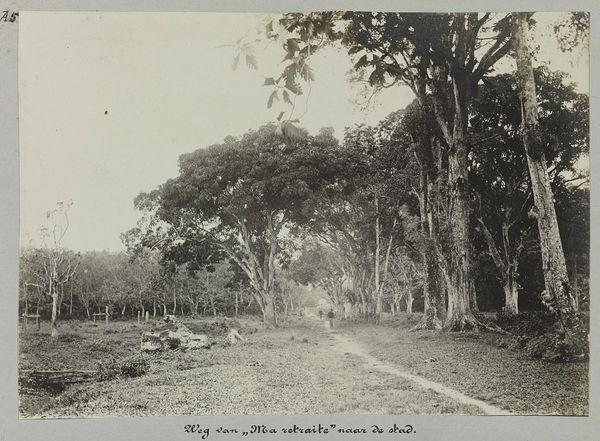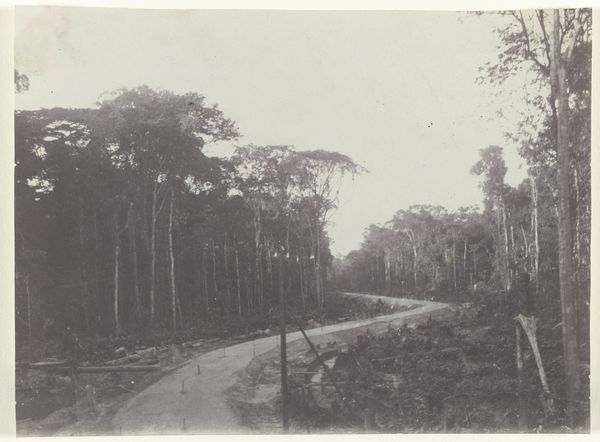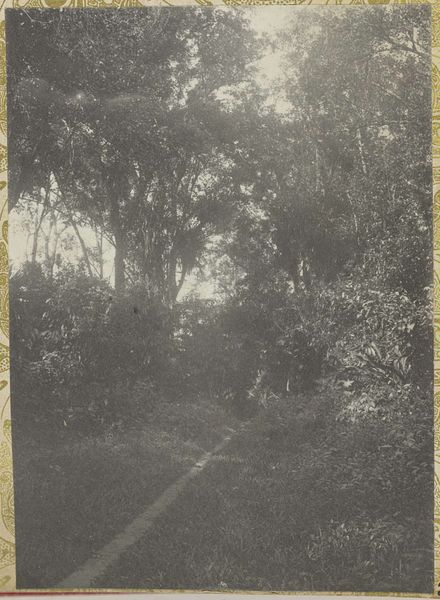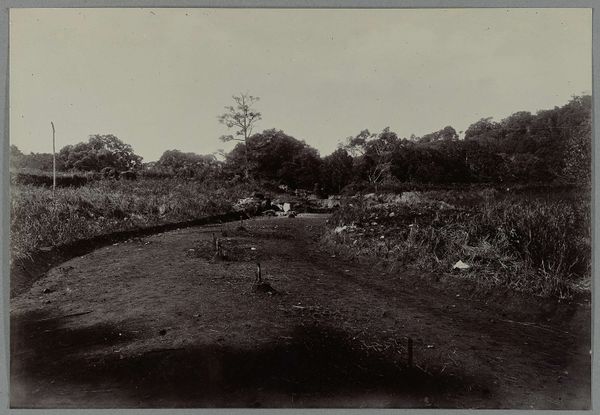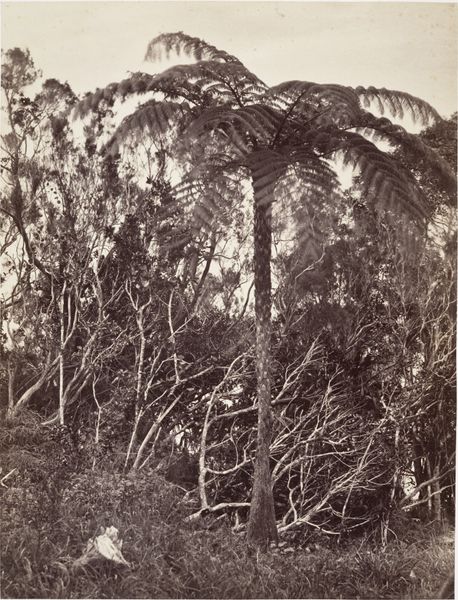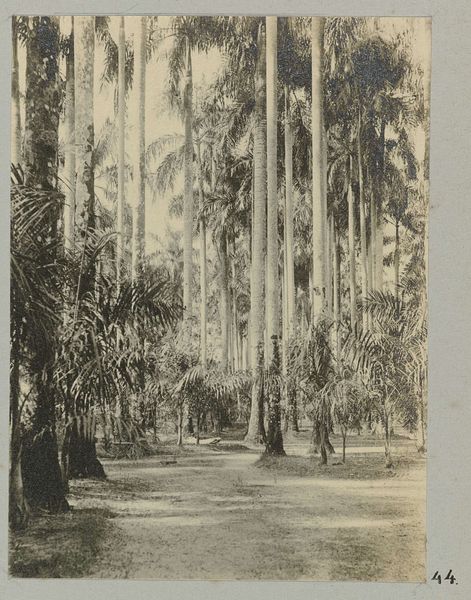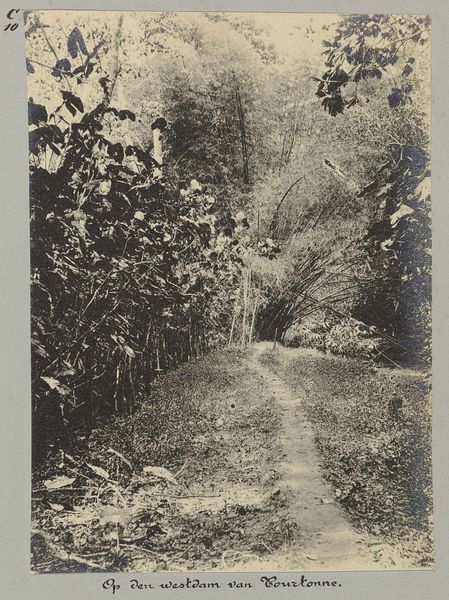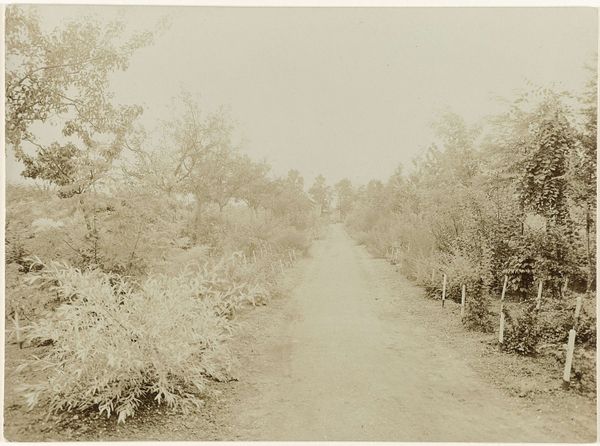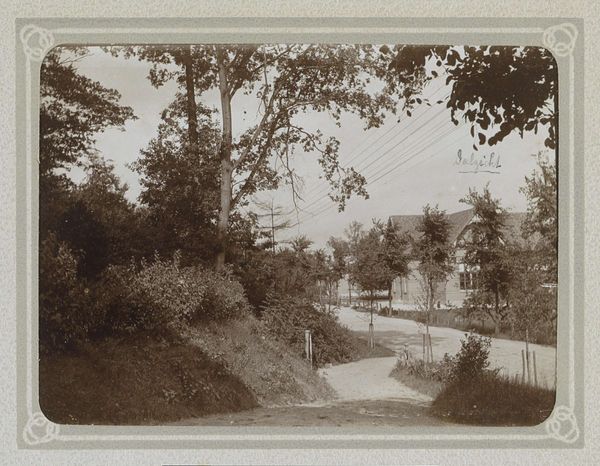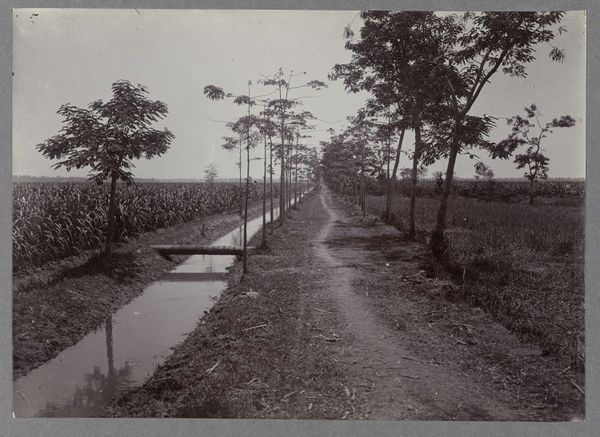
print, photography, albumen-print
# print
#
landscape
#
photography
#
orientalism
#
albumen-print
Dimensions: height 166 mm, width 120 mm
Copyright: Rijks Museum: Open Domain
Curator: Let's turn our attention to Hendrik Doijer's albumen print, "Awarra-laan bij Saron," created sometime between 1903 and 1910. Editor: The immediate impression is one of tranquil isolation. The tonality, almost monochromatic, evokes a subdued, dreamlike state. It’s a pathway that invites, yet simultaneously seems to withdraw. Curator: This work situates itself within a fascinating historical context of Dutch Orientalism. The photographer presents a vision of the "exotic" East, a vision shaped by colonial power dynamics and the projection of European ideals onto the landscape and its people. The very act of photographing, of documenting, became a tool for defining and, in many ways, controlling the narrative. Editor: Precisely. The winding road depicted becomes a potent symbol. It mirrors life's journey. In many traditions, the road symbolizes choices, obstacles, and ultimately, the unfolding of destiny. And, culturally, these tropical trees denote a very particular place in people's minds and experiences, speaking to notions of bounty, the unfamiliar, but also the impenetrable and wild. Curator: Right. Think of the indigenous communities whose lives were disrupted by the colonial project, by this so-called exploration of exotic locales. What stories does this lane silence? The photographic choices amplify this dynamic, framing the scene as an empty Eden ready to be charted and exploited. Even though figures are absent, it is hard to see a serene scene of nature without also sensing the historical tension within such representations of tropical landscapes. Editor: Absolutely. But consider the enduring symbolic power, how the artist presents this thoroughfare. There is the literal, dirt road but on a visual level, we follow that directional road from the near to the far, and our gaze eventually turns toward this other, wilder growth of shrubbery to its side; each element competes, visually speaking, and generates emotional complexity that simple exoticizing can't fully explain. It allows some freedom for interpretation, despite the colonial overtones you mentioned. Curator: Freedom, perhaps, for the viewer, but the artist's framing cannot be separated from its power structures. The choice of a single road implies not a journey of discovery, but a specific, predetermined path, reinforcing control. Editor: Well, the artist seems keen to make us, if only for a moment, ponder how we perceive both self and Other on our journeys, historical or personal. Curator: That complexity of symbolic suggestion in this "empty" landscape gives us a space for grappling with those problematic dynamics inherent in its creation.
Comments
No comments
Be the first to comment and join the conversation on the ultimate creative platform.

